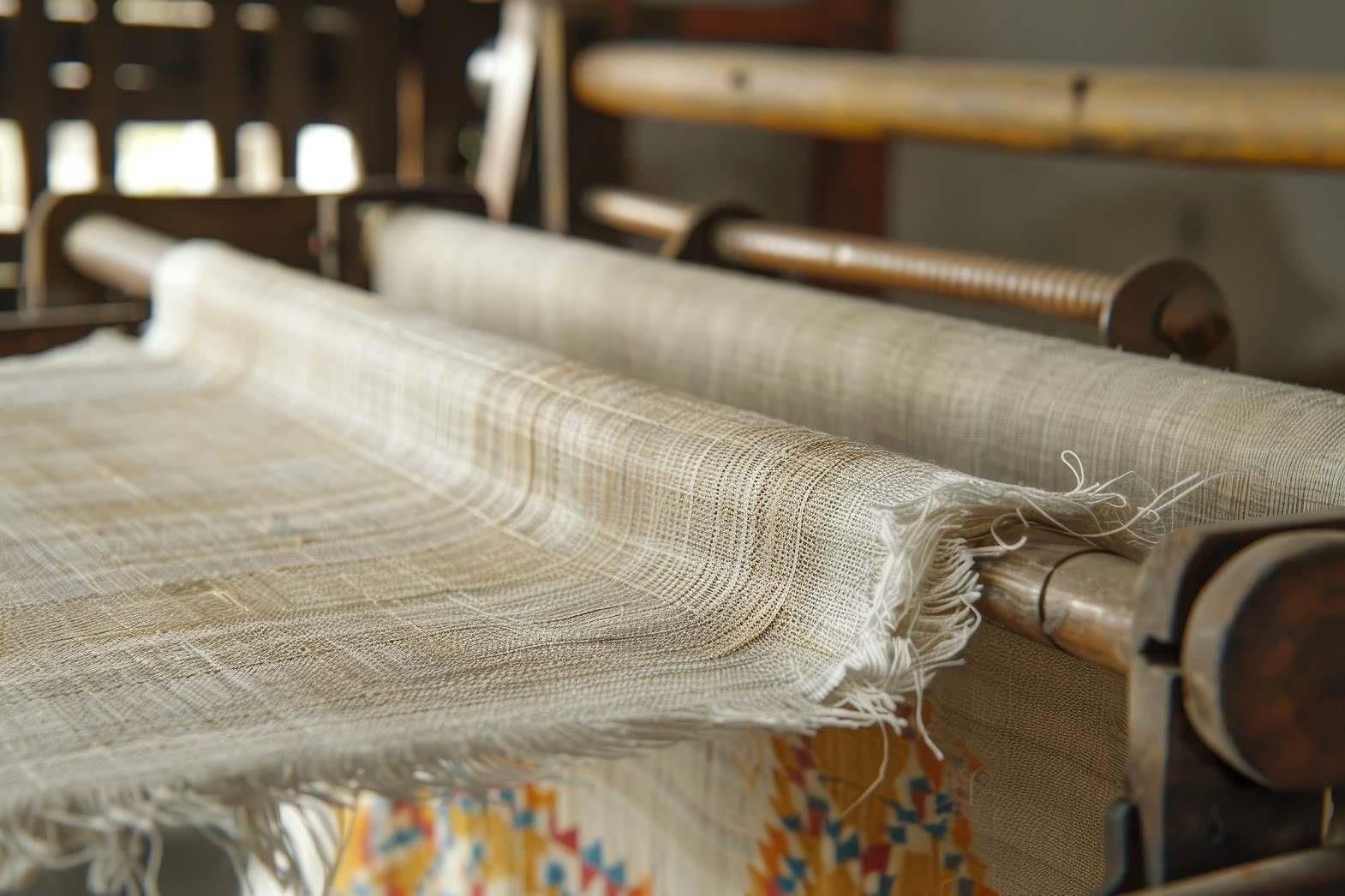A new era has dawned that is urging people to go back to their roots - realize the value of sustainability, nature, and purity. People around the globe are looking for things that connect them to their roots, be it preferring handcrafted products over mass production, favoring traditional cuisines over fast foods, or adopting yoga and meditation as a way of life over gym workouts. Khadi is one of such numerous examples that can guide us back and connect us to our roots. Khadi has proved itself as a fabric that is ecologically right and socially just.
Weaving has been one of the most primitive activities that were carried out by human beings. Different parts of the world developed different weaving practices through history. Khadi developed in India as a traditional form of weaving that not just entails handloom weaving but also involves hand spinning of the yarn. Thus Khadi refers to the hand-spun and hand-woven fabric of India.
Khadi was revived and promoted on a national scale by Mahatma Gandhi during the struggle for independence. Gandhiji saw immense potential in making Khadi as an alternative to the machine-made, imported cloth from England and as a means to generate self-employment and self-reliance in rural India during the Freedom Struggle.
Weaving and wearing Khadi came to symbolize a political ideology and an active participation of common people in India's freedom struggle and stood as an expression of Independence itself.
Post-independence, Khadi continued to be associated with the idea of employment generation. The government of India specially set up - The Khadi Village and Industries Commission in 1956 as a nodal agency for promoting, planning, and implementing Khadi and other village industries in the country.
But over a period of time, with the increase in the production of mill cloth, which became economically more affordable and trendier, Khadi was relegated to political circles. It came to be related to a white or off-white fabric worn largely by the political leaders and bought by the common man only during discount periods. With the loss of attention in the popular culture of the country, Khadi cloth became synonymous with monotony, dull colors, outdated, and uncouth fashion.
However with the new ecological and ethical awareness, and emphasis on reducing carbon footprint by the use of low energy alternatives, the time has come to review the role and context of Khadi in the current times. A paradigm shift is required for seeing this fabric in a new light.
Khadi stands high on the platform of solutions to development issues where employment generation, capacity building, sustainability and resource- efficiency are the requirements. It is also an answer to a spiritual and sustainable way of life. Brands like "Moral Fibre" have recognized the importance of Khadi and its process as an environment friendly alternative to the current production methods in yarns and fabrics. Such brands are actively promoting Khadi as "Clothing with a Conscience"
Khadi can be made from cotton, silk or wool. It can range from being fine muslin cloth to coarse and thick like a dhurrie. But a connoisseur of Khadi knows that the touch of coarse rough Khadi is also soft to body. So Khadi can be worn as a cloth of comfort and convenience.
Khadi has a unique property of keeping the wearer warm in winter and cool in summer. The more it is washed the better it looks and feel. This versatility makes it an all season fabric. Institutes like "Mahatma Gandhi Institute for Rural Industrialization" have developed special soft and stiff finishes for Khadi that can greatly enhance its end use applicability.
Hence what Khadi needs today is a repositioning. It is ripe for reincarnation as the livery of young surging India. New woven designs, new colours, new finishes and treatments need to be introduced in this ideological fabric without losing the identity of Khadi. New yarn experiments, blends need to be incorporated. Khadi cannot and should not compete with the mill made fabric but should create its own niche with its unique charm of naturally occurring weave errors, yarn faults and raw look.
"Khadi Prayog Samiti" under the Gujarat Rajya Khadi Gramodyog Board has been working to create interesting blends with the khadi yarn. These can be used to develop special range of Khadi fabrics.
It is the handmade quality of the fabric with its inherent unevenness that is the beauty of Khadi. All these qualities make Khadi non-replicable and it is this exclusivity that should be the identity of Brand Khadi and make it stand with the Haute Couture Fashion. At the same time Khadi should be made into products that are relevant in today's fashion scenario. This needs a careful study of national and international trends in colours, styles and silhouettes and their interpretation for Indian and international consumers.
In January 2015, National Institute of Fashion Technology Gandhinagar showcased a trends pavilion for Khadi. A team from the institute analyzed the international fashion, textiles and colour trends and translated the trends for the future of Khadi. The research was exhibited in the form of actual Khadi samples, garments and home products in contemporary colours. These directions could be readily adopted by khadi weavers, samities and product developers to reinvent Khadi and transform it as modern product lines.
The response to this exhibition was tremendous and a lot of young Indians showed their interest in buying, adopting and knowing more about this fresh Khadi. The weavers and producers were excited to see the transformations that could be achieved by only a few changes in their existing designs and raw materials.
Khadi is a concept woven for mind, body and soul. It is a fabric that has lots of character and has been an inseparable part of the Indian culture. It has witnessed the changing times but it itself has not been able to evolve much.
NIFT's exhibition called for this much required evolution and fast-forwarding Khadi to its rightful place in the wardrobe of young India.
To conclude, the Khadi that one wears should be more than a fabric; it should be a way of life and symbolize going back to basics.








Comments